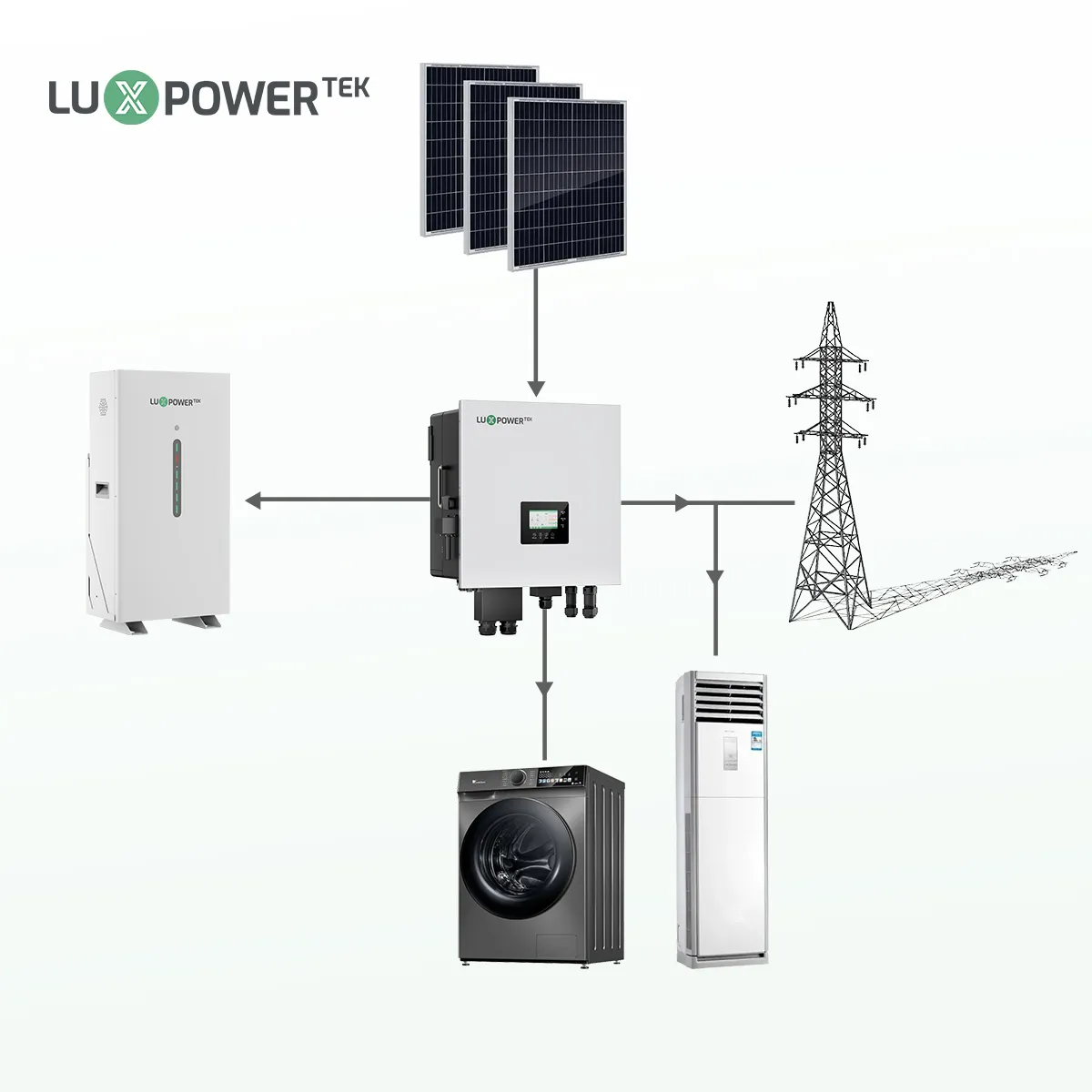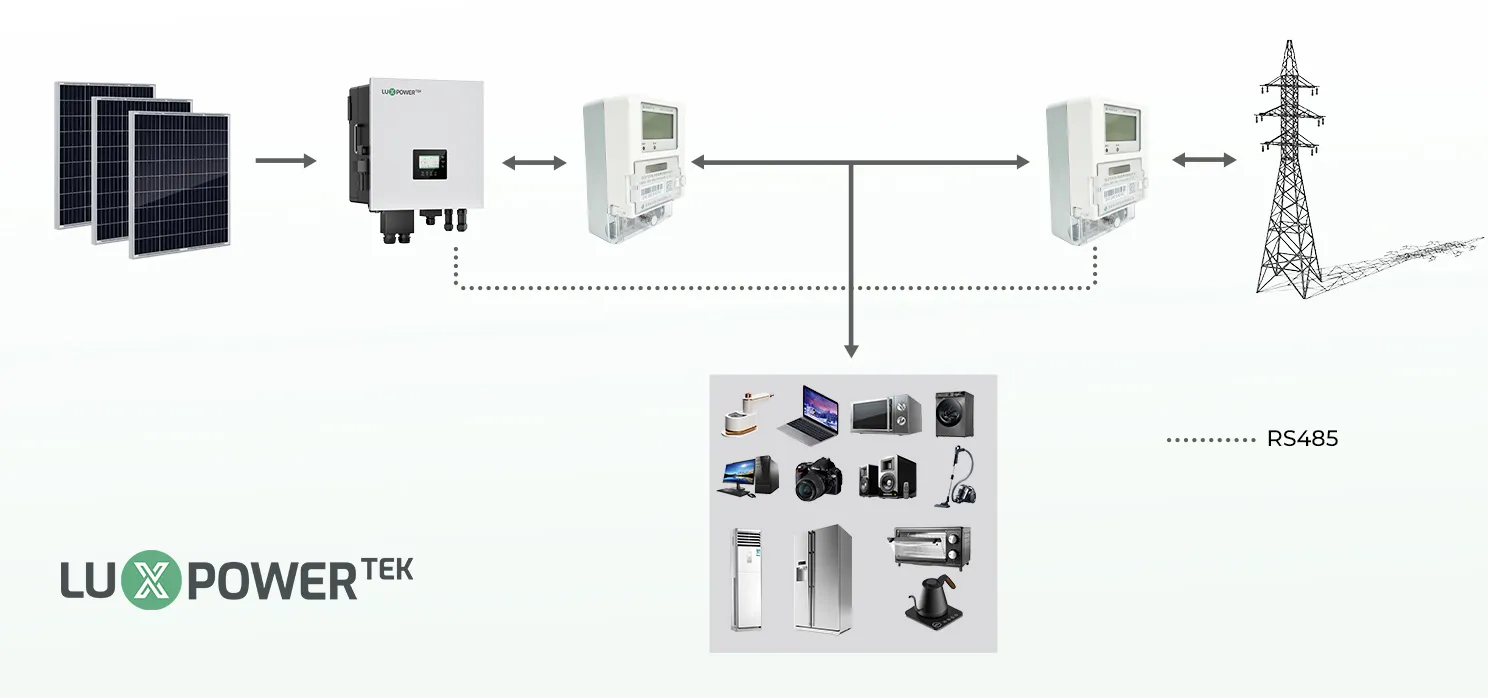In low-voltage power supply systems, electricity is typically distributed from distribution transformers to various loads in the grid, creating forward current. However, with the integration of photovoltaic (PV) power plants and energy storage systems, the generated power can exceed local demand. When this happens, the surplus electricity is fed back into the grid, resulting in reverse current flow, commonly referred to as anti-islanding.
Anti-islanding prevention is essential for maintaining grid stability and ensuring energy storage systems operate efficiently while complying with grid codes. This article will explore how inverters handle anti-islanding, the importance of preventing reverse power flow, and how energy storage solutions contribute to this process.
What is Anti-Islanding?
In a typical photovoltaic (PV) and energy storage system, the DC power generated by solar panels is converted into AC power and fed into the grid. However, with anti-islanding protection, the inverter ensures that when grid power is lost or excess power is produced, the energy is directed towards local loads or stored in energy storage systems, instead of being sent back to the grid. This helps maintain system safety and prevent damage to grid infrastructure.


Why is it Necessary to Prevent Reverse Power Flow in Energy Storage and PV Systems?
Excessive power injection into the grid can degrade power quality, cause voltage fluctuations, or even lead to electrical faults in regions with older grid infrastructure. Preventing reverse power flow in PV and energy storage systems is critical in these scenarios, as some regions have regulations that either restrict or prohibit feeding excess electricity into the grid.
In addition to improving grid stability, preventing reverse power flow can enable faster deployment of energy storage solutions. Some specific reasons for implementing reverse power flow prevention include:
- Transformer capacity limitations: The local grid cannot support additional connections due to upstream transformer capacity limits, but customers still want to install PV and energy storage systems.
- Regulatory restrictions: In certain regions, regulations prohibit grid connections, and fines may be imposed if reverse power flow is detected.
- High energy storage system costs: Customers may have completed their PV system installations but cannot afford to install expensive energy storage systems, requiring reverse power flow solutions in the interim.
How Reverse Power Flow Prevention Works in PV and Energy Storage Systems

Reverse power flow prevention ensures that excess power generated by PV systems or energy storage is either consumed locally or limited. The working principle can be described as follows:
- If the power generated by the PV system is less than the power consumed by the local load, reverse power flow prevention is unnecessary.
- If the generated power exceeds the local demand, the system must limit power output or increase load consumption to avoid sending excess electricity to the grid:
- For multiple PV sources: One or more sources can be disconnected to match the power generated with the load.
- For single PV sources: The system can either limit power output or increase load consumption until the balance is achieved.
By integrating intelligent energy meters at key points in the system, data on power generation and consumption can be collected and compared. Based on this data, the system can adjust the power output of the inverter or redirect power to energy storage to prevent reverse power flow. A common approach is to install a bidirectional energy meter at the grid connection point. If reverse current is detected, the inverter can reduce its output or redirect the power to storage systems.
Energy Storage Solutions for Reverse Power Flow Prevention
One effective solution to prevent reverse power flow is the integration of energy storage systems. These systems store excess electricity generated by PV panels, which can be used later when local demand increases, or when the grid is unavailable. By using battery storage, surplus power can be efficiently managed without causing reverse current issues.

Common Misconceptions about Anti-Islanding and Energy Storage:
- Instruments alone do not prevent backflow: Energy meters and sensors monitor power flow but do not directly prevent backflow. They provide data to the inverter, which then adjusts its output or redirects power to storage.
- Multiple inverters and energy storage systems require communication management: If the system includes multiple inverters or energy storage units, a communication management device is needed due to the limitations of the RS485 bus, which allows only one master station per bus.

Key Takeaways
- Anti-islanding solutionsare critical for maintaining grid stability and preventing reverse power flow in PV and energy storage systems.
- Reverse power flow prevention helps ensure compliance with grid regulations and improves the efficiency of energy storageand inverter systems.
- Integrating energy storage solutionsoffers an effective way to manage surplus electricity and avoid unnecessary power injection into the grid.

